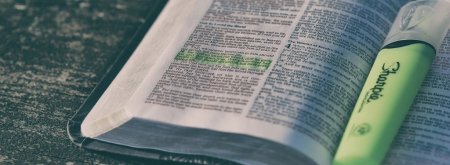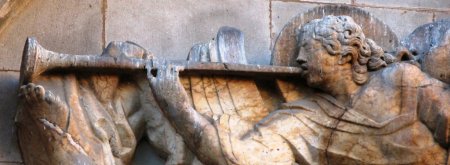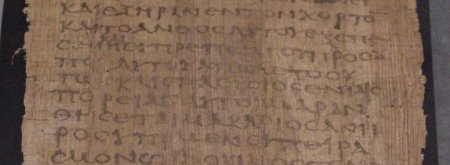The Beauty of Books: Codex Sinaiticus
You may have seen the recent programme "The Beauty of Books: Ancient Bibles" on BBC4, 8th February 2011. This well-produced and researched programme concluded that the church deliberately introduced thousands of changes into the New Testament for theological reasons. Similar statements have been made before in the media and we believe that they are highly misleading.
If you missed the programme, a short clip can be seen here. The first half was about Codex Sinaiticus, which is the oldest Bible bound in a single volume, made in about AD 350. One of the world’s foremost scholars on this ancient book is Dr Dirk Jongkind, a Research Fellow at Tyndale House. Responding to the conclusions of this programme about theological agendas he said: "This is the weak point in the whole documentary: everyone who makes the effort to see what sort of alterations are made to the text will see that the scribes' agenda was to preserve the readings found in older handwritten copies."

Codex Sinaiticus is a marvellous manuscript because it contains the oldest full text of the New Testament on top-quality material, produced at great expense. The 23,000 corrections may seem therefore surprising, and the programme concluded that these had a theological agenda. It examined two extreme examples, both in Mark: the first verse has 'Son of God' added as a "correction", and the last verse ends with 'for they were afraid'. The narrator concluded that although some corrections might be scribal errors, these two "corrections" indicated a theological agenda to correct the meaning of the text.

Although there are some corrections, where the original is erased or overwritten, this is relatively rare. Most of the 23,000 aren't "corrections" because they leave the original text fully visible, putting a dot under or over letters instead of deleting them, and writing above letters so you can clearly see the earlier text, as the screenshots from the program show clearly. This demonstrates that they didn't want to expunge bad theology, but they wanted to record that other manuscripts were often subtly different. The vast majority of these changes are very minor – alternate spellings or slight grammatical variations which make no difference to the meaning of the text.
The thousands of manuscripts later than Sinaiticus have numerous tiny differences due to inexpert copying in the early church. If a class of students all copied out a short book by hand, they would all make mistakes, but the teacher might still be able to reconstruct the original from all the copies. Textual scholars of the New Testament do this same work today.

At Tyndale House we have the very best photographic facsimiles of Codex Sinaiticus which, together with the original, have been closely studied. Scholars here study the almost identical lettering of different scribes by enlarging the text on computers. Dr Jongkind has carefully studied the scribal errors and found that individual scribes made different kinds of error. These studies have helped to confirm the underlying original text which these scribes started with.
The documentary concluded that the phrase 'Son of God' in Mark 1:1 was missing from the original Gospel and that Mark believed that Jesus became divine at his baptism. But if Mark had wanted to teach this, then Jesus' baptismal saying would be: 'You are now my Son' or 'You have become my Son'. But Mark couldn't make this point by omitting 'Son of God' from verse 1, because no one would expect it to be there. This phrase occurs in some older manuscripts and not in others, and the debate continues about whether it was added or omitted, but it is unlikely that the variant is an attempt to change the theological message of the whole gospel.

 The main conclusion of this documentary was that the scribes of Codex Sinaiticus added alterations because of their theological agenda. In fact, the only theological agenda that can be demonstrated is a high reverence for the text and a desire to record differences in manuscripts so that the original can be preserved.
The main conclusion of this documentary was that the scribes of Codex Sinaiticus added alterations because of their theological agenda. In fact, the only theological agenda that can be demonstrated is a high reverence for the text and a desire to record differences in manuscripts so that the original can be preserved.
The videos of recent Bible and Church events deals with such issues in detail. Get a copy here.
© 2011 David Instone-Brewer
We are grateful to Tyndale House for permission to reproduce this material.



